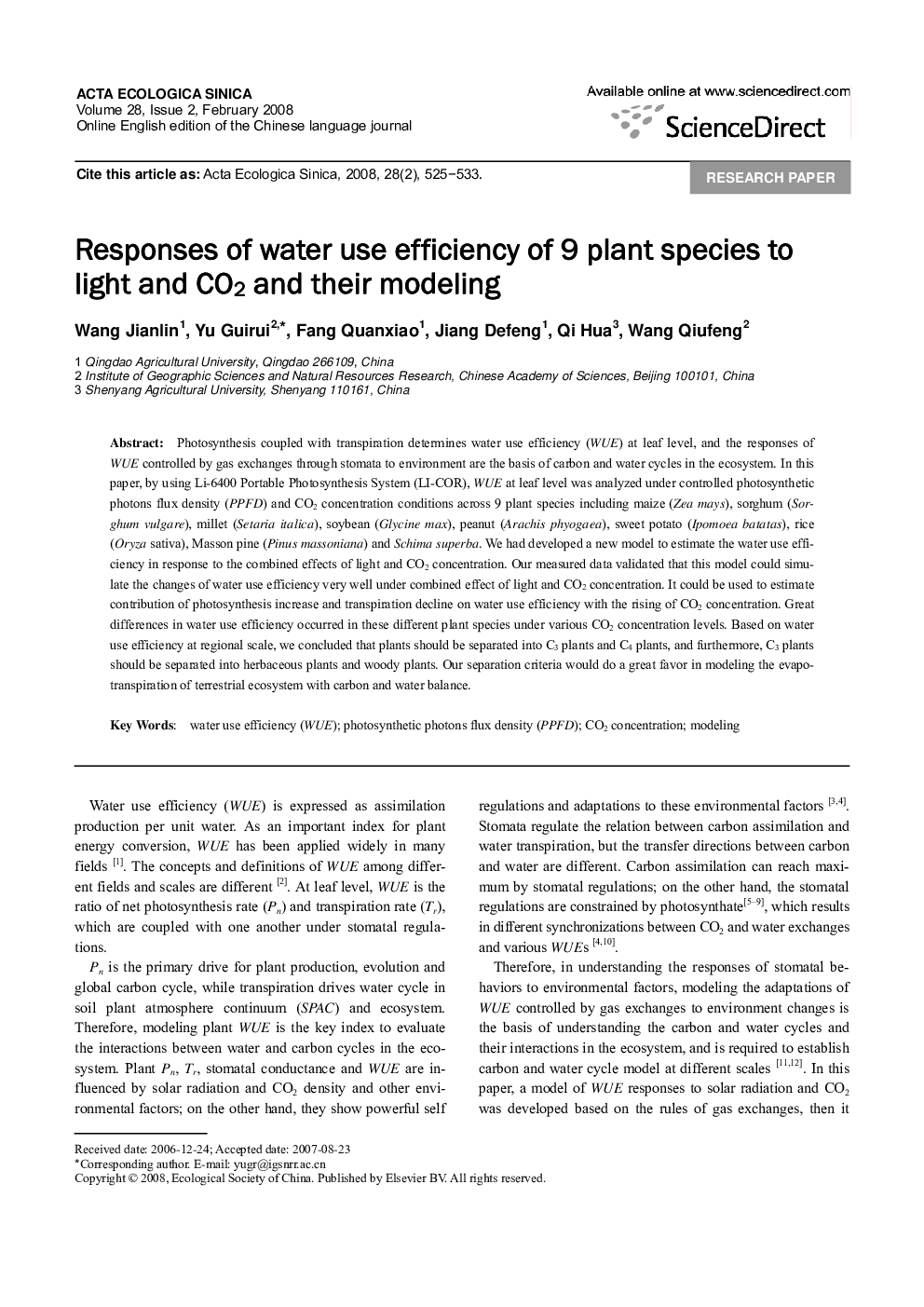| Article ID | Journal | Published Year | Pages | File Type |
|---|---|---|---|---|
| 4380281 | Acta Ecologica Sinica | 2008 | 9 Pages |
Photosynthesis coupled with transpiration determines water use efficiency (WUE) at leaf level, and the responses of WUE controlled by gas exchanges through stomata to environment are the basis of carbon and water cycles in the ecosystem. In this paper, by using Li-6400 Portable Photosynthesis System (LI-COR), WUE at leaf level was analyzed under controlled photosynthetic photons flux density (PPFD) and CO2 concentration conditions across 9 plant species including maize (Zea mays), sorghum (Sorghum vulgare), millet (Setaria italica), soybean (Glycine max), peanut (Arachis phyogaea), sweet potato (Ipomoea batatas), rice (Oryza sativa), Masson pine (Pinus massoniana) and Schima superba. We had developed a new model to estimate the water use efficiency in response to the combined effects of light and CO2 concentration. Our measured data validated that this model could simulate the changes of water use efficiency very well under combined effect of light and CO2 concentration. It could be used to estimate contribution of photosynthesis increase and transpiration decline on water use efficiency with the rising of CO2 concentration. Great differences in water use efficiency occurred in these different plant species under various CO2 concentration levels. Based on water use efficiency at regional scale, we concluded that plants should be separated into C3 plants and C4 plants, and furthermore, C3 plants should be separated into herbaceous plants and woody plants. Our separation criteria would do a great favor in modeling the evapotranspiration of terrestrial ecosystem with carbon and water balance.
